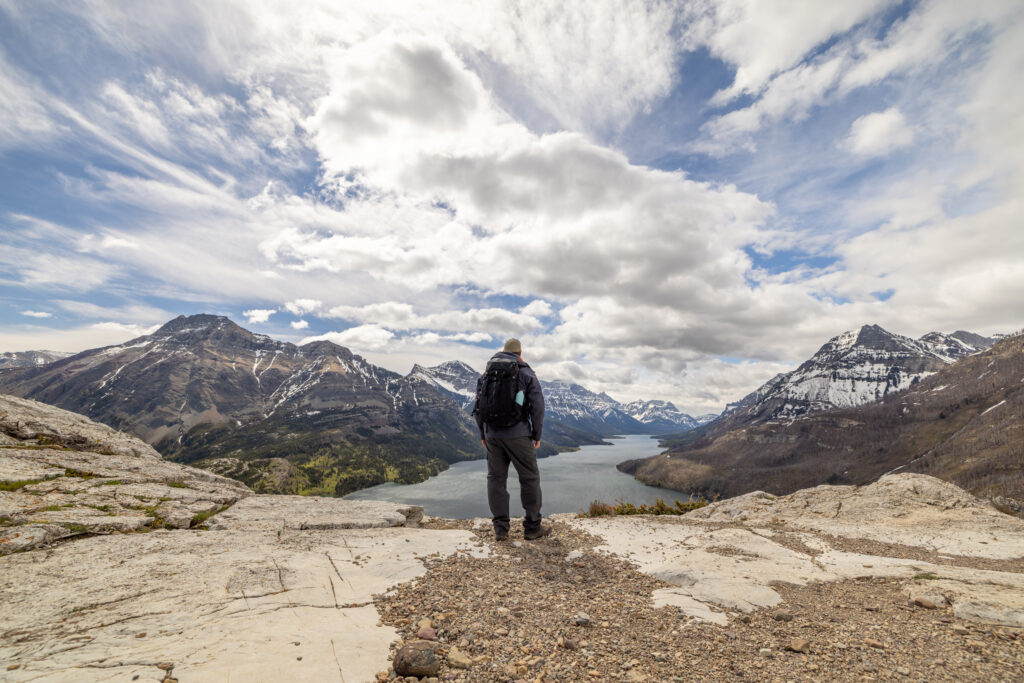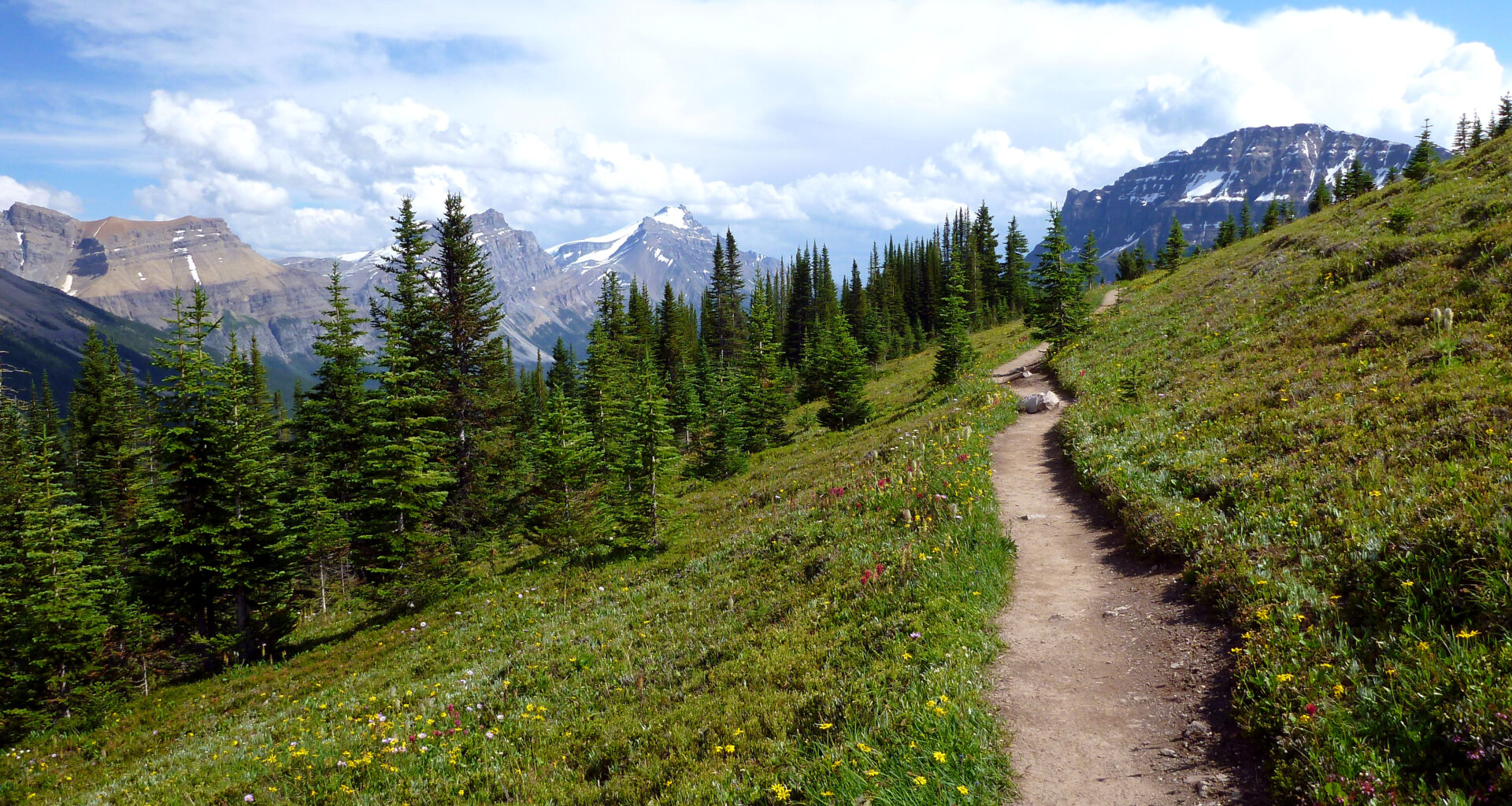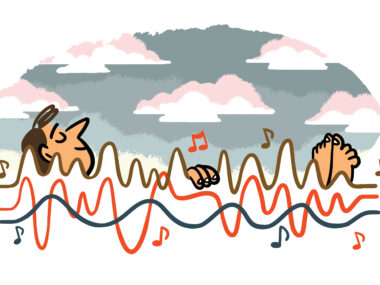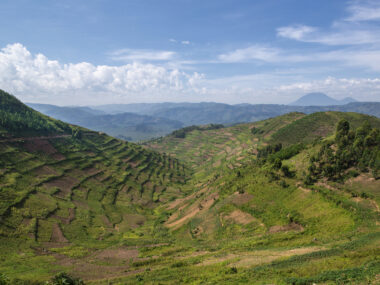Written By Jennifer Myers, BA’97
Hiking in the Rocky Mountains offers an unparalleled opportunity to experience the breathtaking beauty of one of North America’s most magnificent landscapes. And, blissfully, it’s one of the most accessible recreational activities in the mountains, especially for people living or visiting in and around Calgary.
However, unexpected events like sudden changes in weather, getting lost, meeting wildlife on the trail or encountering unexpected terrain can easily happen. Building some knowledge around preparedness and safety is key for a great hiking experience.
We asked Rachel Oggy, Hiking Program Coordinator with the University of Calgary’s Outdoor Centre, to share some advice for preparations, skill- and knowledge-building, as well as making hiking fun.
Prepare and Test Your Equipment Before You Get on the Trail
Oggy says comfort is key to enjoying your day — but so is making sure your equipment works when you need it.
Pack your backpack so it is balanced and comfortable, consider using hiking poles, and practise lacing your boots to support your feet in different terrain. Test your socks and be attentive to what your feet are telling you to avoid blisters. Also, be prepared to manage blisters if you get them.
Some other essential gear to consider? A pack with broad shoulder straps and a waterproof cover; a headlamp in case you’re still on the trail when the sun goes down; a map and GPS device or compass; waterproof footwear and clothing, including a change of socks; a toilet bag, toilet paper and hand-sanitizer; and a first aid kit.

Take an Active Role in the Learning
If you’re relatively new to hiking, first … hike! Hike with people who have the skills and experience you don’t.
“Bring a map and refer to it to keep track of your position,” says Oggy, who has been guiding hikes for the Outdoor Centre for more than 10 years. “Know the route plan for the day and discuss why the route was chosen, what landmarks the leader is using to follow the route, and what alternative trails are nearby that could be used if the plan needed to change, or for a return visit.”
Oggy also suggests talking through some “what if?” situations on the trail, including what emergency communication devices and related equipment your group is carrying and who has first aid training.
Stay Found
Find reliable sources of information like guidebooks, online resources from Parks Canada or Alberta Parks, or staff at visitor centres. Oggy says learning to read a map is a critical hiking skill.
“Using GPS or a compass only works if you’re building on your map-reading skills,” Oggy says. “A topographical map will tell you about direction, but also what the trail will be like and will allow you to keep track of where you are, what is around you, what options you have and where you want to go next.”
Importantly, tell someone where you’re going and when you expect to return, so they can alert RCMP or local emergency services if you don’t show up safely at the end of the day.
Be Attentive
Look up. Weather can change quickly and you’ll want to respond to it in advance.
“Thunderheads are much taller than any other clouds,” says Oggy. “You can recognize when the clouds are growing tall or the winds are getting strong and coming toward you before the sky above turns stormy.”

Be Bear Aware
Did you know bears are the only larger animals (except humans!) in the Rockies with five toes? Watch out for five-toed footprints in mud or snow, and also learn to recognize fresh bear scat (poop). Make noise, pay attention to what is going on around you and carry bear spray in a place you can easily grab it. Oggy suggests watching a YouTube video on how to use bear spray and remember, bear spray works on any animal.
Know When to Turn Back
You may meet trail conditions you weren’t expecting, such as snow, fallen trees blocking the trail, or you may come to terrain you don’t know how to cross (or feel is too dangerous) like a creek or boulders.
“You’ve got to ask: is this a reasonable thing for me to try to cross and, if so, how can I safely do that?” says Oggy. “The bigger consideration is recognizing when it’s not hiking and you’re pushing into scrambling or other advanced terrain. Know when you may need to stop and reassess what you’re prepared for and if passing these obstacles is something you want to do.”
Know Your Trail Etiquette
Basic etiquette keeps things safe and respectful for everyone. Some trails allow hikers, horses and/or mountain bikes, while others limit use to certain users or restrict access during certain times of year. Signs will let you know, but Oggy says, when sharing a trail, hikers yield to horses since a horse’s reaction can be less predictable; mountain bikes should yield to hikers and horses; and downhill hikers are asked to yield to uphill hikers.
Also, practise the principle of “leave no trace” – pack out your garbage, and don’t take anything away that belongs to the natural environment.
Make it Fun
Name the mountain peaks. Bring a flower guide and count the flower species you can see. Lie down and see what’s growing (and crawling) from a new angle. The most exciting part of a hike is witnessing the natural environment.

“When I learned how to recognize different types of trees, suddenly going for a completely forested hike wasn’t a boring day with no views, but a really interesting day where I could see the difference between a pine forest and a forest of spruce and fir,” says Oggy. “The geology of the mountains is fascinating, too, when you understand they weren’t just pushed up but were scraped out by glaciers. Historically, people might have used a path because it was a practical way to get through a valley and to collect berries or shrubs.”
Get More Information from the Outdoor Centre
“For a new hiker, going out on a guided hike to see something cool without having to figure it all out themselves at the beginning is a great idea,” says Oggy. “If it’s more advanced skills you’re after, we offer navigation courses including map reading and GPS, wilderness first aid certification, and avalanche safety training. You can also rent equipment like overnight gear for backpacking trips or trail crampons for winter hikes.”
Open to the public and offering rentals, classes and guided experiences, the UCalgary Outdoor Centre is a gateway to everything the great outdoors has to offer. And the best part? It’s brimming with experts who want nothing more than to share their enthusiasm.




